|
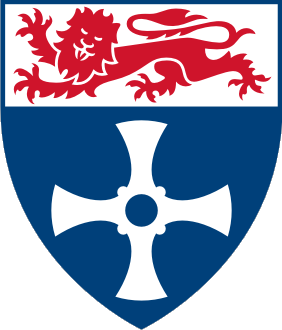
ABOUT
NU
Newcastle University is a public research university located in Newcastle upon Tyne in the north-east of England. It was established as a School of Medicine and Surgery in 1834 and became the University of Newcastle upon Tyne by an Act of Parliament in August 1963. Newcastle University is a member of the Russell Group, an association of research-intensive UK universities. The University has one of the largest EU research portfolios in the UK. The post-nominal letters of graduates commonly have N'cle attached to indicate the institution.
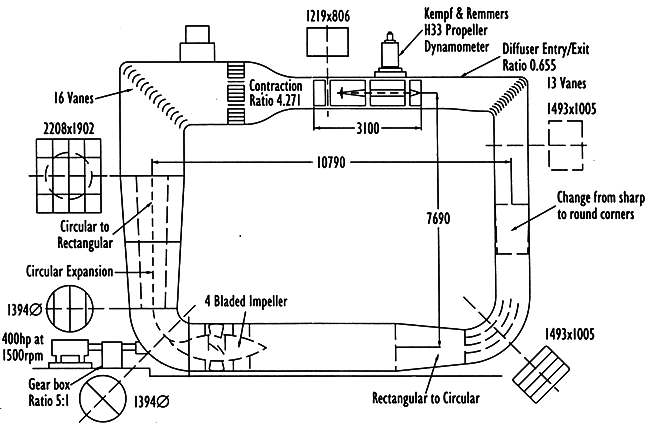
EMERSON
CAVITATION TUNNEL
The Emerson Cavitation Tunnel is a propeller testing facility based at Newcastle University, UK. The tunnel is based in the department of Marine Science and Technology, and is currently the second largest cavitation tunnel in the UK, the largest being that owned by the Ministry of Defence at Haslar.
SPECIFICATIONS
The Emerson Cavitation Tunnel consists of a water circuit which flows in the vertical plane, within which propellers and other propulsion devices can be tested. The system is powered by a 300 kW (400 hp) pump, with a four-bladed impeller and can produce a maximum water velocity of 15.5 knots (28.7 km/h; 17.8 mph). The test area has a cross sectional area of 0.99 m2 (10.7 sq ft) allowing model propellers of up to 40 cm (16 in) in diameter to be tested. The pressure range of the tunnel can vary from a minimum of 7.6 kN/m2 to a maximum of 106 kN/m2. Cavitation numbers of 0.5 (minimum) to 23 (maximum) can be accommodated for. Measurements can be taken using a 3 Watt, water-cooled, Argon-ion laser, a hydrophone, and two dynamometers. A high-speed video camera is also attached with an imaging frequency of 0–50 frames per second.
Funding for the tunnel's equipment is raised by numerous organisations, including the Engineering and Physical Sciences Research Council (EPSRC) and the Scottish Universities of Glasgow and Strathclyde.
TUNNEL HISTORY
The tunnel was first established at the University in 1949 after being disassembled and transported from Pelzerhaken, Germany after the Second World War. The tunnel arrived at the University in 1947 and over the following few years the tunnel was heavily modified. The tunnel - which was originally designed to operated in the horizontal plane - was converted into a vertical loop tunnel and the length was reduced by half. The original observation window was modified and two more added. Because of damage, a new impeller was constructed and numerous pieces of measuring equipment were added. This equipment included pitot tubes, a tachometer, stroboscopic lighting equipment, contact meters and a vacuum pump. The tunnel was connected to an electrical supply in 1949 and entered service late in 1950, after technical problems called for recalibration of some of the instruments. The Cavitation Tunnel is still housed in Newcastle University's old boiler house, where it was originally reconstructed.
The first research grant of £8,000 was awarded in 1950 for the testing of a new series of propellers, and was awarded by the Department of Scientific and Industrial Research (DSIR).
In the 1970s and 1980s, the tunnel was extensively modified and upgraded in order to improve the range of propellers that could be tested. The tunnel was also renamed to its current name, the Emerson Cavitation Tunnel after Dr Arnold Emerson, who was the tunnel superintendent and the driving force behind the upgrades.
Since the upgrades of the 1980s, few other modifications have been made to the tunnel itself. New computer-based data collection, interpretation and analysis technology has been added to aid with computational fluid dynamics. Data is also collected with the help of laser doppler anemometry (LDA) and phase doppler anemometry (PDA).
RESEARCH
Much
early design work was conducted in partnership with Stone Manganese Marine,
leading to a fruitful partnership, both in terms of propeller design with Burrill, Emerson, Sinclair, Glover and with structural aspects of propellers with Atkinson. In later years fewer series were constructed due to the growth in computing technology, The ECT therefore developed its own code to aid in the design of propellers, this was known as GBPL85 which today is known as UPCA91.
The Emerson Cavitation Tunnel continues today to develop, make and test propeller designs, for a broad range of applications from the new podded drive systems,
ducted propellers, to tidal turbines.
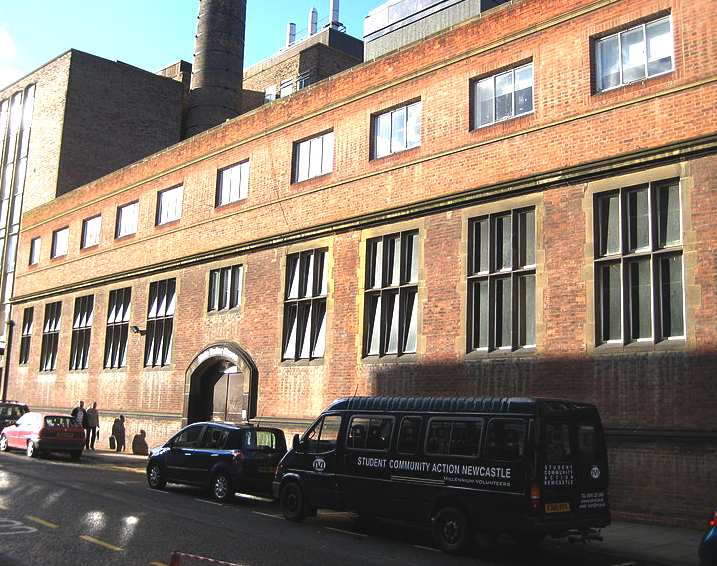
The Emerson cavitation tunnel, main boiler house Newcastle University
MAR8038
: High Speed and Advanced Craft
*
Offered for Year: 2013/13
*
Module Leader(s): Prof. Mehmet Atlar
*
Owning School: Marine Sciences & Technology
Aims
A1
- special hydrodynamics and structural requirements associated with
high speed and advanced
craft design
A2 - methods for predicting/analysing resistance and dynamic stability
of planing mono-hull craft
A3 - methods for predicting/analysing seakeeping behaviour and dynamic
stability of twin-hull
vessels with specific emphasis to SWATH (small waterplane area
twin-hull) ships
A4 - waterjet principles and applications to high-speed craft
A5 - structural design aspects of high-speed mono/multi-hull craft
Outline
Of Syllabus
This
course consists of the topics related to "planning craft
resistance and stability", "twin-hull (SWATH) seakeeping and
stability", "Waterjet propulsion" and "Structural
aspects of high speed and advanced craft". These topics are
lectured by three different lecturers. In the following therefore the
associated syllabuses are listed for each of these topics. However,
there is no logical lecturing sequence amongst these topics. Usually,
the Planing Craft Resistance and SWATH seakeeping topics are the first
and lectured in parallel. This is followed by the Waterjets and
Structural Aspects topics.
Planing Craft Resistance/Stability - resistance of planing craft,
empiracal methods of calculation of resistance power requirements,
porpoising stability.
Twin-hull (SWATH) Seakeeping/Stability - Twin-hull and SWATH
seakeeping philolophy and design considerations; SWATH motion response
prediction; dynamic stability of SWATH and stabilizer design;
seakeeping laboratory demonstration.
Waterjets - general features and main components; efficiency
calculation and preliminary selection of water jet; other features of
waterjets.
Structural aspects - introduction (specific issues on structural
design of high-speed craft; overview; design codes for high-speed
craft); strength of panels; strength of stiffened panels: materials
with particular reference to aluminium; strength of SWATHs.
Teaching
Methods
Teaching
Activities
|
Category
|
Activity
|
Number
|
Length
|
Student
Hours
|
Academic
Staff Contact Hours
|
Comment
|
|
Guided
Independent Study
|
Assessment
preparation and completion
|
1
|
12:00
|
12:00
|
0:00
|
Examination
Revision
|
|
Scheduled
Learning And Teaching Activities
|
Lecture
|
24
|
1:00
|
24:00
|
24:00
|
N/A
|
|
Guided
Independent Study
|
Assessment
preparation and completion
|
1
|
7:30
|
7:30
|
0:00
|
Coursework
|
|
Guided
Independent Study
|
Assessment
preparation and completion
|
1
|
2:00
|
2:00
|
0:00
|
Examination
|
|
Guided
Independent Study
|
Directed
research and reading
|
1
|
42:30
|
42:30
|
0:00
|
N/A
|
|
Scheduled
Learning And Teaching Activities
|
Small
group teaching
|
12
|
1:00
|
12:00
|
12:00
|
Tutorial
|
|
Total
|
|
|
|
100:00
|
36:00
|
|
Teaching
Rationale And Relationship
Lectures
in the classroom provide the students with general understanding of
and familiarity to the special hydrodynamic and structural
requirements (IKO1, ISO1); to learn techniques/develop skills to
estimate/analyse resistance, sea-keeping and dynamic stability
behaviour (IKO2,3,4, ISO2); to select and analyse waterjets (IKO3,
IKO5); to design/analyse the structures of high-speed and advanced
craft (IKO6, ISO4).
Observation of video films on the special hydrodynamic behaviour of
planing craft and SWATH ships with commentary helps thet students to
understand and have the knowledge of specific hydrodynamics problems
(IKO1).
If time allows, sea-keeping tests observations in the towing tanks
with a representative SWATH vessel help the students to familiarise
themselves with the sea-keeping behaviour of SWATHS and experimental
techniques to predict (ISO2).
This module covers a wide range of topics for different vessel types
within relatively limited lecturing hours. The students are therefore
strongly recommended and are guided to read classic and the
state-of-the-art papers in their independent study time to support the
lectures and to catch-up with the latest developments in this
fast-developing subject area.
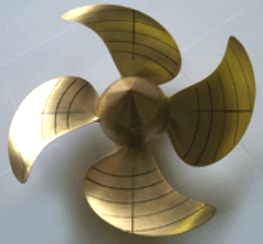
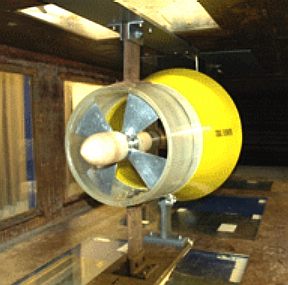
CAMPUS
The university occupies a campus site close to Haymarket in central Newcastle upon Tyne. It is located to the northwest of the city centre between the open spaces of Leazes Park and the Town Moor.
The Armstrong building is the oldest building on the campus and is the site of the original Armstrong College. The building was constructed in three stages; the north east wing was completed first at a cost of £18,000 and opened by HRH Princess Louise on 5 November 1888. The south-east wing, which includes the Jubilee Tower, and south-west wings were opened in 1894. The Jubilee Tower was built with surplus funds raised from an Exhibition to mark Queen Victoria's Jubilee in 1887. The north-west front, forming the main entrance, was completed in 1906 and features two stone figures to represent science and the arts. Much of the later construction work was financed by Sir Isaac Lowthian Bell, the metallurgist and former Lord Mayor of Newcastle, after whom the main tower is named. In 1906 it was opened by King Edward VII.
The building contains the King's Hall, which serves as the university's chief hall for ceremonial purposes where Congregation ceremonies are held. It can contain 500 seats. King Edward VII gave permission to call the Great Hall, King's Hall.
Graduation photographs are often taken in the University Quadrangle, next to the Armstrong building. In 1949 the Quadrangle was turned into a formal garden in memory of members of Newcastle University who gave their lives in the two World Wars.
The Bruce Building is a former brewery, constructed between 1896 and 1900 on the site of the Hotspur Hotel, as the new premises of Newcastle Breweries Limited.
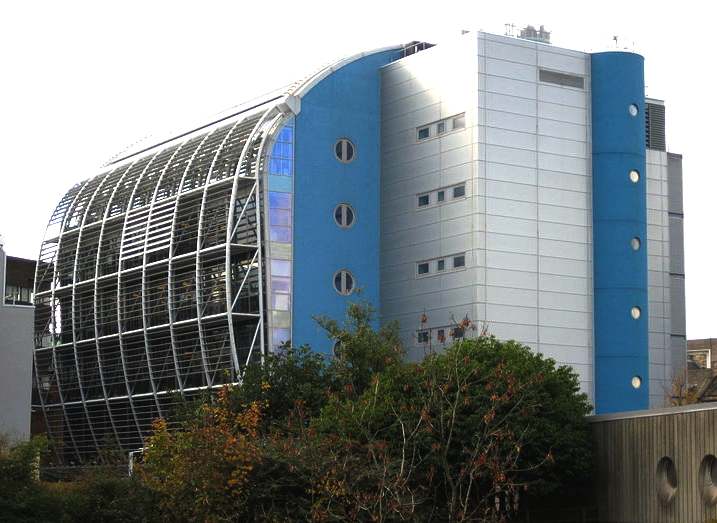
The award winning energy efficient Devonshire
Building
The Devonshire Building, opened in 2004, incorporates in an energy efficient design. It uses photovoltaic cells to help to power motorised shades that control the temperature of the building and geothermal heating coils. Its architects won awards in the Hadrian awards and the RICS Building of the Year Award 2004. The university won a Green Gown award for its construction.
Plans for additions and improvements to the campus were made public in March 2008 and completed in 2010 at a cost of £200 million. They included a redevelopment of the south-east (Haymarket) façade with a five-storey King's Gate building and sculpture as well as new student accommodation. Two additional buildings for the school of medicine were also built. September 2012 saw the completion of the new buildings and facilities for INTO Newcastle University on the University campus. The main building provides 18 new teaching rooms, a Learning Resource Centre, a lecture theatre, science lab, administrative and academic offices and restaurant.
In addition to the city centre campus there are buildings such as the Dove Marine Laboratory located on Cullercoats Bay. The University also has two branches in
Asia; in Malaysia and
Singapore.
Newcastle University Library has received the Charter Mark five times in a row. It consists of three main facilities. The Robinson Library is the main University library. It is named after Philip Robinson, a bookseller in the city and benefactor to the library, in 1989. A major refurbishment was completed in 2009. The Walton Library specialises in services for Biomedical Sciences in the Medical School. It is named after Lord Walton of Detchant, former Dean of the Faculty of Medicine and Professor of Neurology. The library has a relationship with the Northern region of the NHS allowing their staff to use the library for research and study. The Law Library specialises in resources relating to law. Some schools within the University, such as the School of Modern Languages, also have their own smaller libraries with smaller highly
specialized collections.
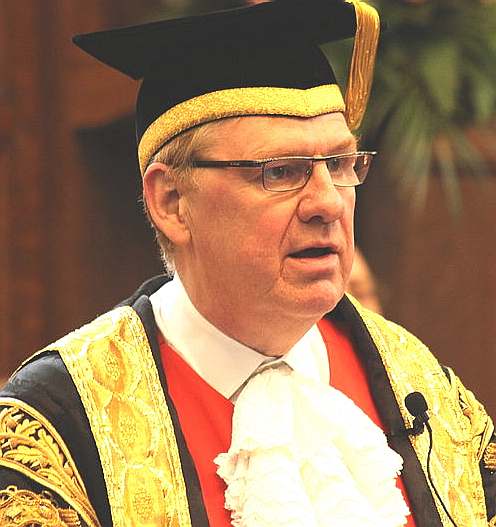
Sir Liam Donaldson, Chancellor, Newcastle University
CONTACTS
University postal address
Newcastle University
Newcastle upon Tyne
Tyne and Wear
NE1 7RU, UK
Switchboard: +44 (0) 191 222 6000
Emerson Cavitation Tunnel
School of Marine Science and Technology
Armstrong Building
University of Newcastle upon Tyne
Newcastle upon Tyne
NE1 7RU, U.K.
Tel UK: 0191 222 8977/5067
Tel Int: +44 191 222 8977/5067
Fax UK: 0191 222 8977/5067
Fax Int: +44 191 222 8977/5067
E-mail to mehmet.atlar@newcastle.ac.uk
MARINE
ACADEMIC INSTITUTIONS A-Z
Australian
Maritime - Geneve
- Hawaii
Renewable - NERC
- Newcastle
Naval
NOC
Oceanographic - Plymouth - Portsmouth
- Seoul
Naval - SOTON
Strathclyde
Marine - Sussex
- TU
Delft - USP South
Pacific - Webb
Institute
LINKS
http://www.ncl.ac.uk
http://www.ncl.ac.uk/postgraduate/modules/module/MAR8038/
http://en.wikipedia.org/wiki/Emerson_Cavitation_Tunnel
http://www.amc.edu.au/
http://www.gavia.is/
http://www.strath.ac.uk/na-me/
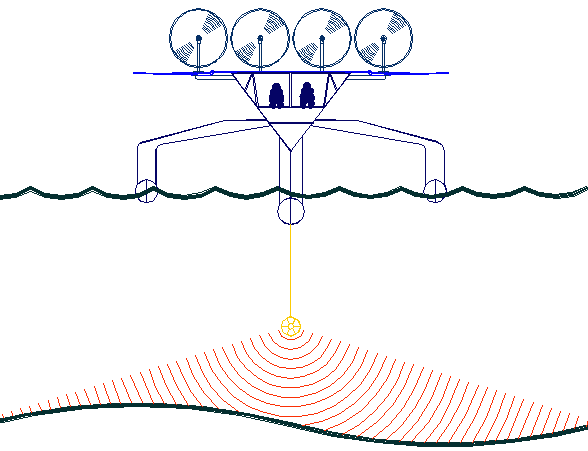
The
key to accurate oceanographic survey is continuous monitoring,
for which the Bluefish SNAV
platform is a robotic ocean workhorse. Based on a stable
SWASH
hull this design is under development by British
engineers. The robot
ship uses no diesel fuel to monitor the oceans autonomously (COLREGS
compliant) at relatively high
speed 24/7 and 365 days a year - only possible with the revolutionary (patent) energy harvesting system. The
hullform is ideal for automatic release and recovery of AUVs, ROVs
or towed arrays, alternating between drone and fully autonomous modes.
International development partners are welcome. This vessel
pays for itself in fuel saved every ten years.
|







